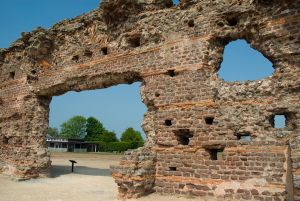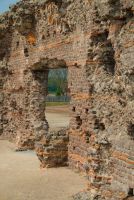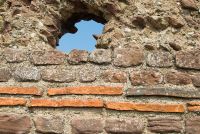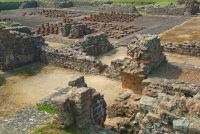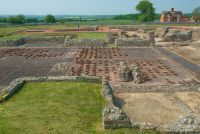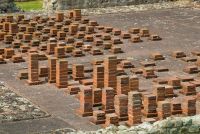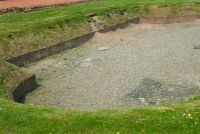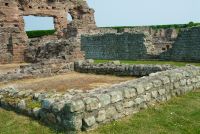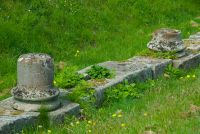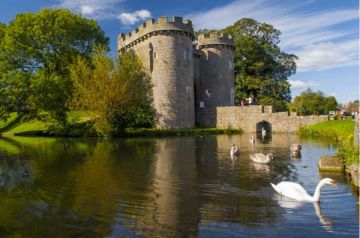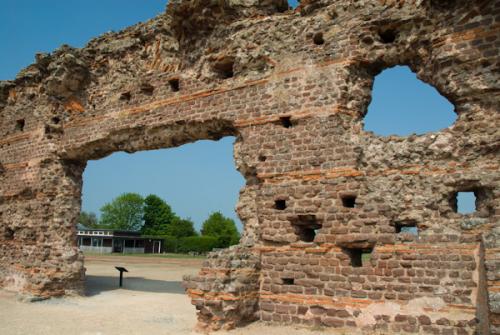
The 1st century Roman city of Viroconium Cornoviorum, complete with bath and forum. Wroxeter was the fourth largest city in Roman Britain, and this importance is reflected in the remains of the city. The site was lost for centuries before it was rediscovered in the Victorian period.
Such was the public interest in the subsequent excavation of Wroexter that the landowner donated the site to the public, making it one of the very first archaeological sites in Britain to become a tourist attraction regularly open to visitors.
Viroconium began as a legionary fort. A settlement grew up around the fort, and became a thriving city of great importance, numbering in excess of 5000 inhabitants at its height. Most of the population that swelled this new city came from the ranks of retired legionaries and tradesmen.
The city grew to cover an area of some 73 hectares and acted as the tribal capital of the Cornovii. The civic areas were some of the largest in Britain, with the bath and forum occupying 2 entire insulae, or city blocks.
The most impressive remains to view include the municipal baths. These date from the 2nd century and stand beside a large exercise hall. After the Roman influence waned, the site became the headquarters of a British or Irish chieftain.
Unlike many other Roman cities, Wroxeter was not redeveloped as a Saxon or medieval centre, with the result that we can more easily see the Roman layout of the city. Aerial photographs have also revealed the existence of a Romano-British temple.
Stones from Virocnium were used in the construction of Wroxeter parish church, a short distance away.
About Wroxeter Roman City
Address: Wroxeter,
Shrewsbury,
Shropshire,
England, SY5 6PH
Attraction Type: Roman Site
Location: 5 miles east of Shrewsbury on the B4380
Website: Wroxeter Roman City
English Heritage - see also: English Heritage memberships (official website)
Location
map
OS: SJ565 081
Photo Credit: David Ross and Britain Express
HERITAGE
 We've 'tagged' this attraction information to help you find related historic attractions and learn more about major time periods mentioned.
We've 'tagged' this attraction information to help you find related historic attractions and learn more about major time periods mentioned.
Historic Time Periods:
Find other attractions tagged with:
1st century (Time Period) - 2nd century (Time Period) - Medieval (Time Period) - Roman (Time Period) - Saxon (Time Period) - Victorian (Time Period) -
NEARBY HISTORIC ATTRACTIONS
Heritage Rated from 1- 5 (low to exceptional) on historic interest
Wroxeter, St Andrew's Church - 0 miles (Historic Church) ![]()
Attingham Park - 1.4 miles (Historic House) ![]()
Cronkhill House, Attingham Park - 1.8 miles (Historic House) ![]()
Longner Hall - 2.9 miles (Historic House) ![]()
Cantlop Bridge - 3.2 miles (Historic Building) ![]()
Acton Burnell Castle - 4.4 miles (Castle) ![]()
Haughmond Abbey - 4.8 miles (Abbey) ![]()
Shrewsbury Abbey - 5 miles (Historic Church) ![]()
Nearest Holiday Cottages to Wroxeter Roman City:
Shrewsbury, Shropshire
Sleeps: 14
Stay from: £1927 - 7972
More self catering near Wroxeter Roman City
